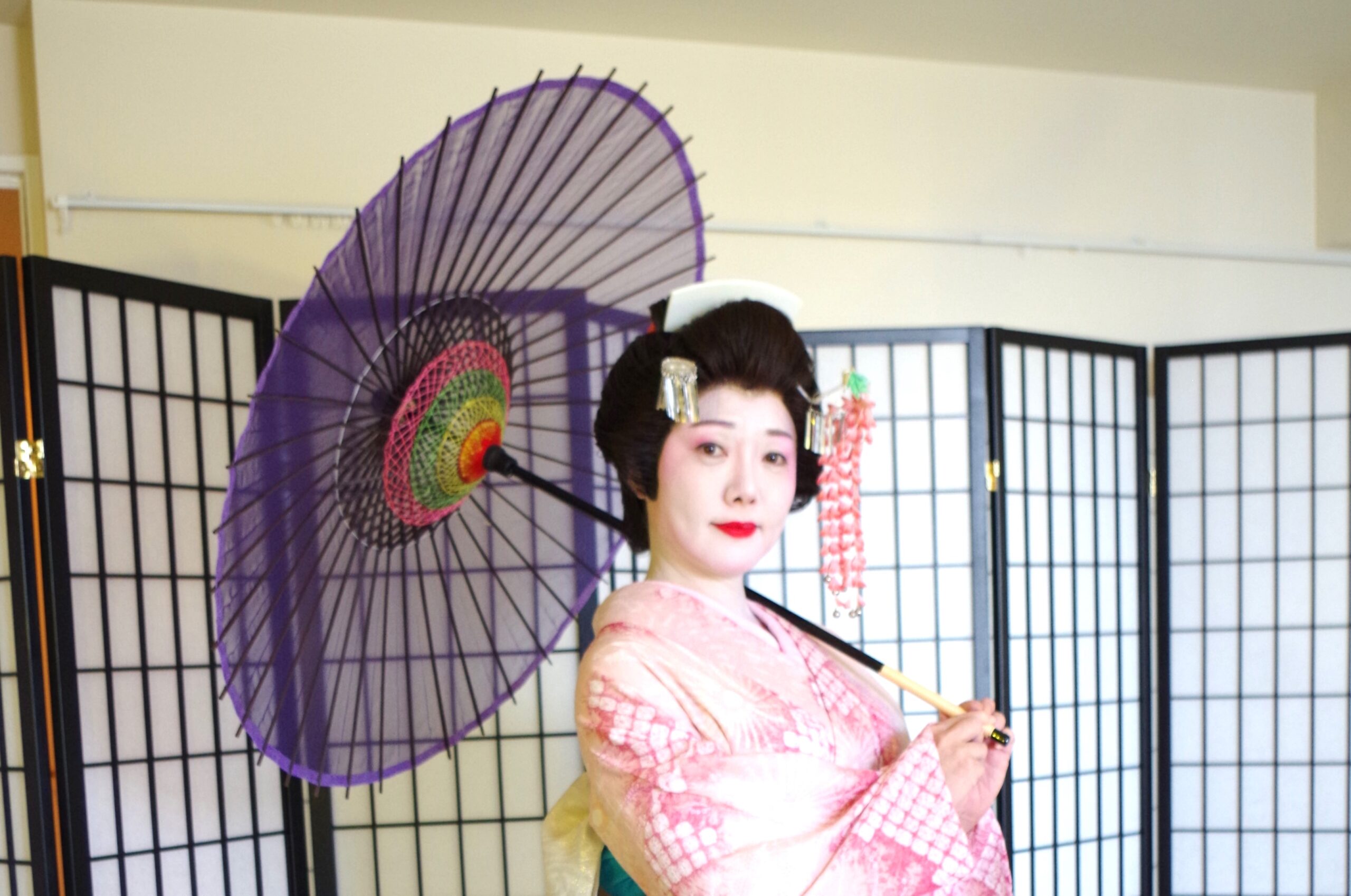ARTIST

Japanese Dance
Tsukihime
As a dance artist who performs on stage herself and as a producer of the entire performance, tsukihime has a lot of work to do.
–The name of TSUKIHIME–
Her stage name Tsukihime is “月妃女” written in Chinese characters.
The meaning of “月姫女” is 月 = moon, 妃= princess, and 女 = lady.
If we were to translate it into English, it would be The lady of the moon princess.
What is it that she is trying to express with her beautiful and mysterious stage name?
–What is Japanese dance?–
First of all, let us understand a little about her specialty, Japanese dance.
Recognized as a traditional art form in modern Japan, Nihon buyo has its origins in kabuki, a theatrical form that is said to have been established around 1600 AD.
The “dance” part, which was one of the expressive elements of Kabuki, was separated and developed into Nihon buyo, the foundation of her expression.
Compared to European ballet or modern dance, Nihon buyo may seem to be a less conspicuous and less exuberant dance.
It does not have the big, full-body movements and high leaps of ballet. It does not have the beat-driven dynamism of modern dances.
However, Japanese dance expresses many kinds of beauty. It expresses not only human emotions but also nature and scenery.
Also, the “Sosaku” is the physical manipulation of the body when wearing a kimono. Each of its movements and choreography contains meaning. The continuous arc of movement expresses civility and modesty, which are considered virtues in Japan.

–Personality–
She has been studying classical ballet since she was three years old.
But by the time I was seven, I had given up on the idea of becoming a ballerina through classical ballet,” she said. I realized that my Asian body was simply not good enough for the beauty that classical ballet is trying to express and its origins. Ballet is more beautifully expressed by a Russian with long arms and legs and a small head.”
It is astonishing that she came to this conclusion at the age of seven, but the turning point for her came when she was in her teens.
When I saw Tamasaburo Bando (a top Japanese dancer who is also a Living National Treasure) perform Japanese dance, I was struck like I was struck by lightning. He is a man, yet he expresses the ultimate feminine beauty. The beauty of his movements, the ultimate manipulation of his body. I knew that Japanese dance was the way for me to live.
Since then, she has continued her study of Nihon buyo.
There are five major schools of Japanese dance in society.
She proved that she had reached a level where she could teach others in one of them, and even earned a “Shihan” certificate.
However, in order to pursue her own vision of beauty, she eventually left the traditional schools and began her own original her style.

–The Future of tsukihime–
As a dance artist who performs on stage herself and as a producer of the entire performance, She has a lot of work to do.
It is a lot of work.
It is not easy to combine her enthusiasm as an artist with her work as a businesswoman.
What is the driving force in her heart?
I have the desire to express myself,” she says.
She pursues beauty through dance and expresses it in the performing arts.
It is as necessary for her as breathing, and as strong as the desire for love.
She told me an interesting story.
She said, “I admire Yang Kwei-Fei of ancient China. I want to be like the one who filled the hearts of emperors and stopped wars.”
One nobleman in England saw her performance and described her as “hypnotic.
Perhaps what the world needs today is the beauty she expresses.
As for what she wants to be in five or ten years, she said, “Anyway, I want to inspire people, and I want to be a part of the world.
Anyway, I want to continue to inspire people. As an artist, I want to continue to surpass myself by pursuing the spirited with a foundation of tradition.
In the irreversible progress of time, She continues to evolve.